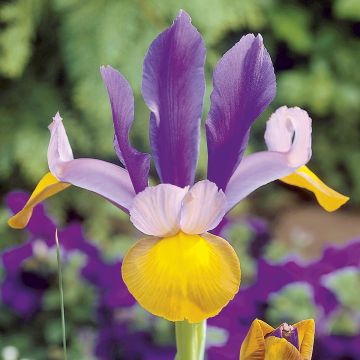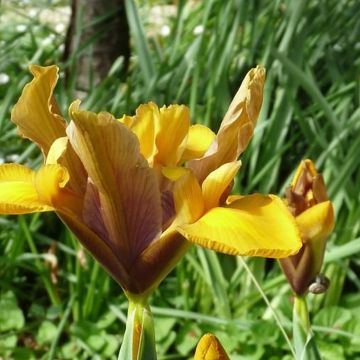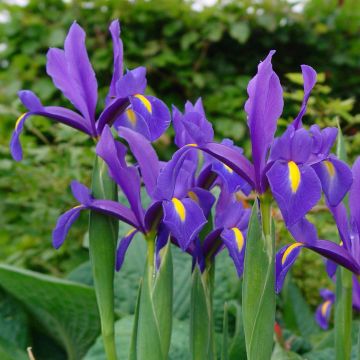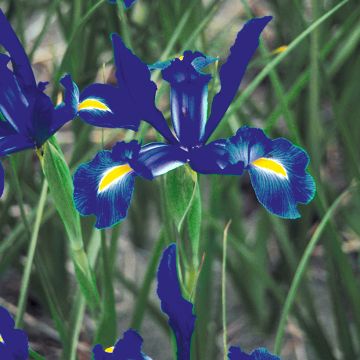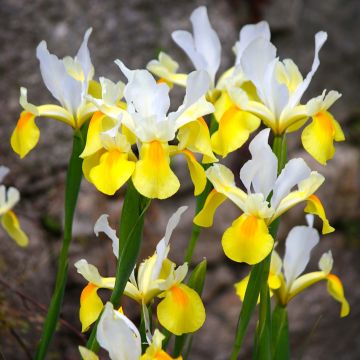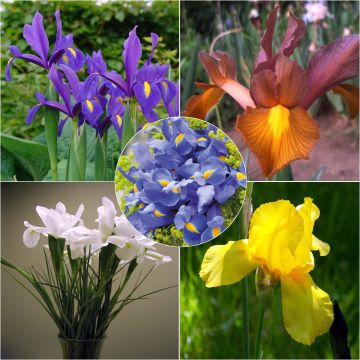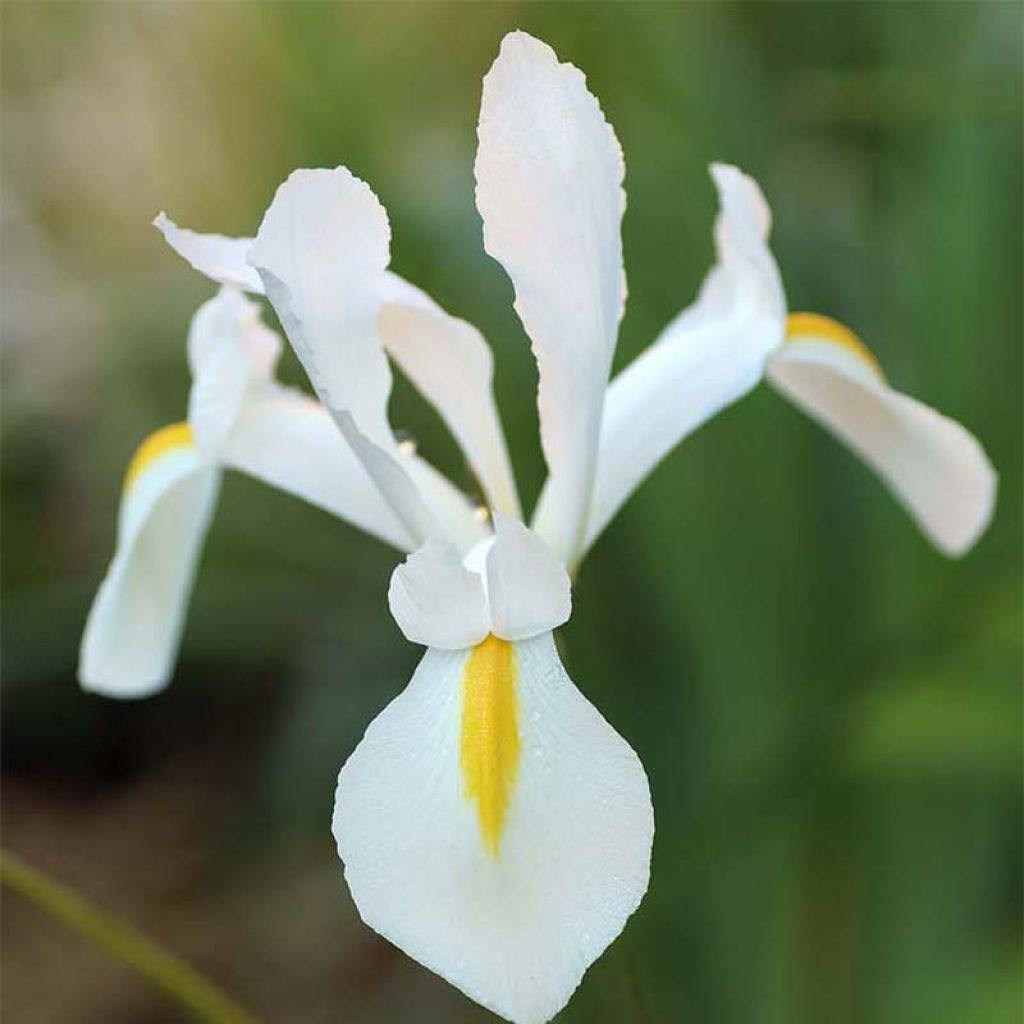

Iris x hollandica White Excelsior
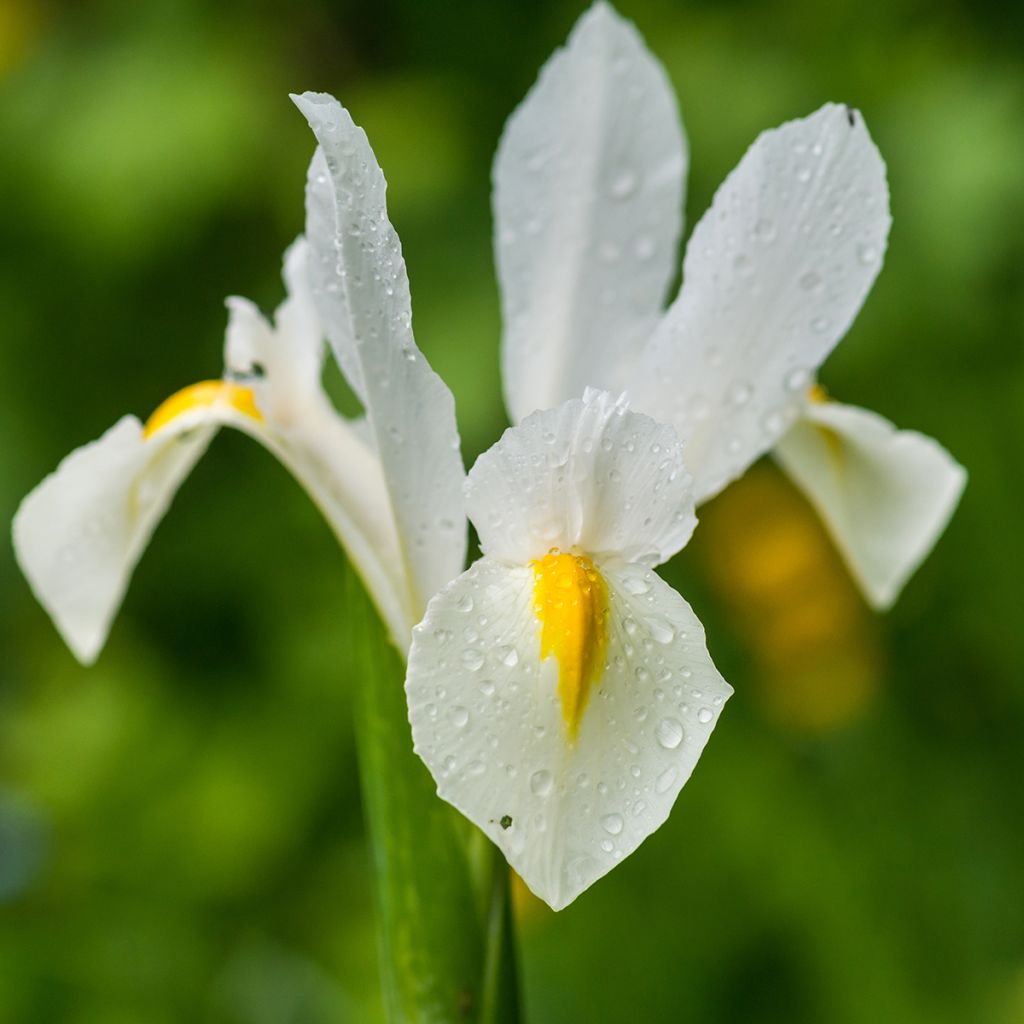

Iris x hollandica White Excelsior
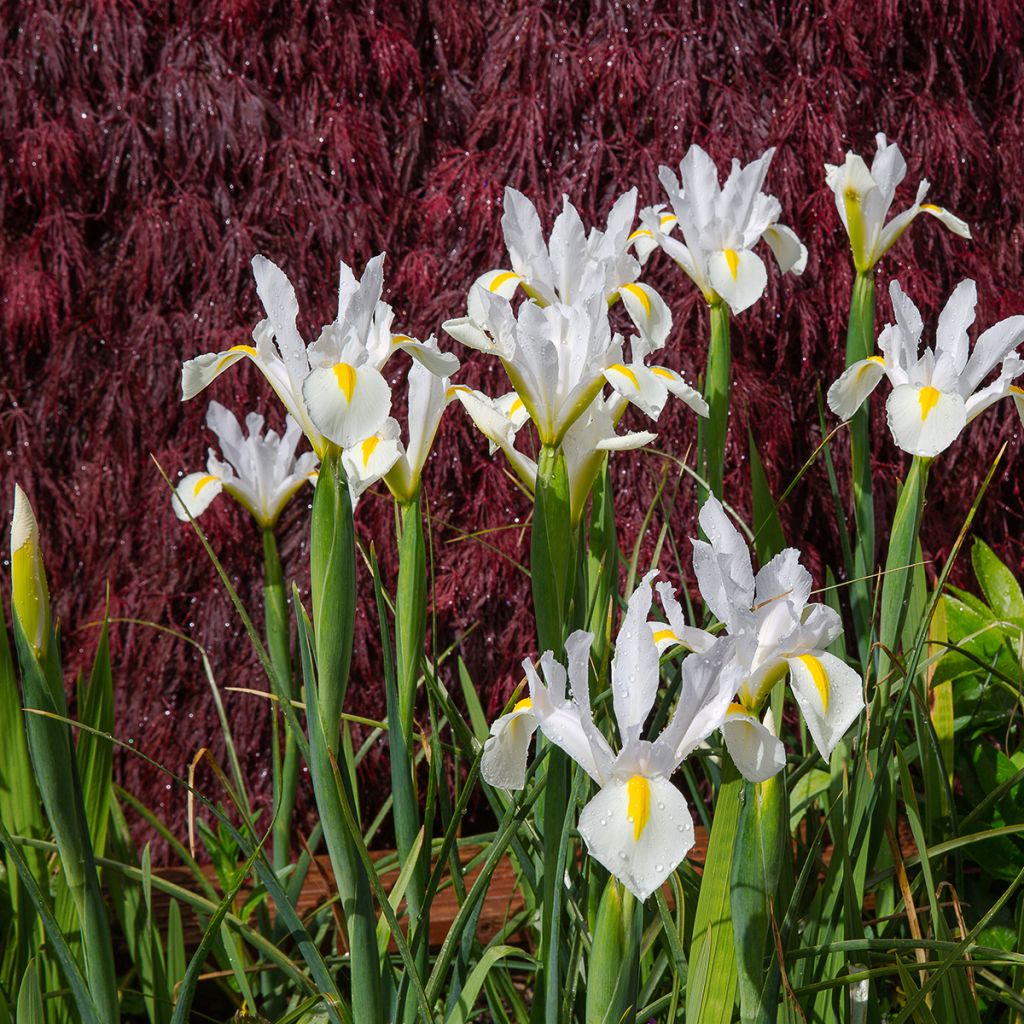

Iris x hollandica White Excelsior
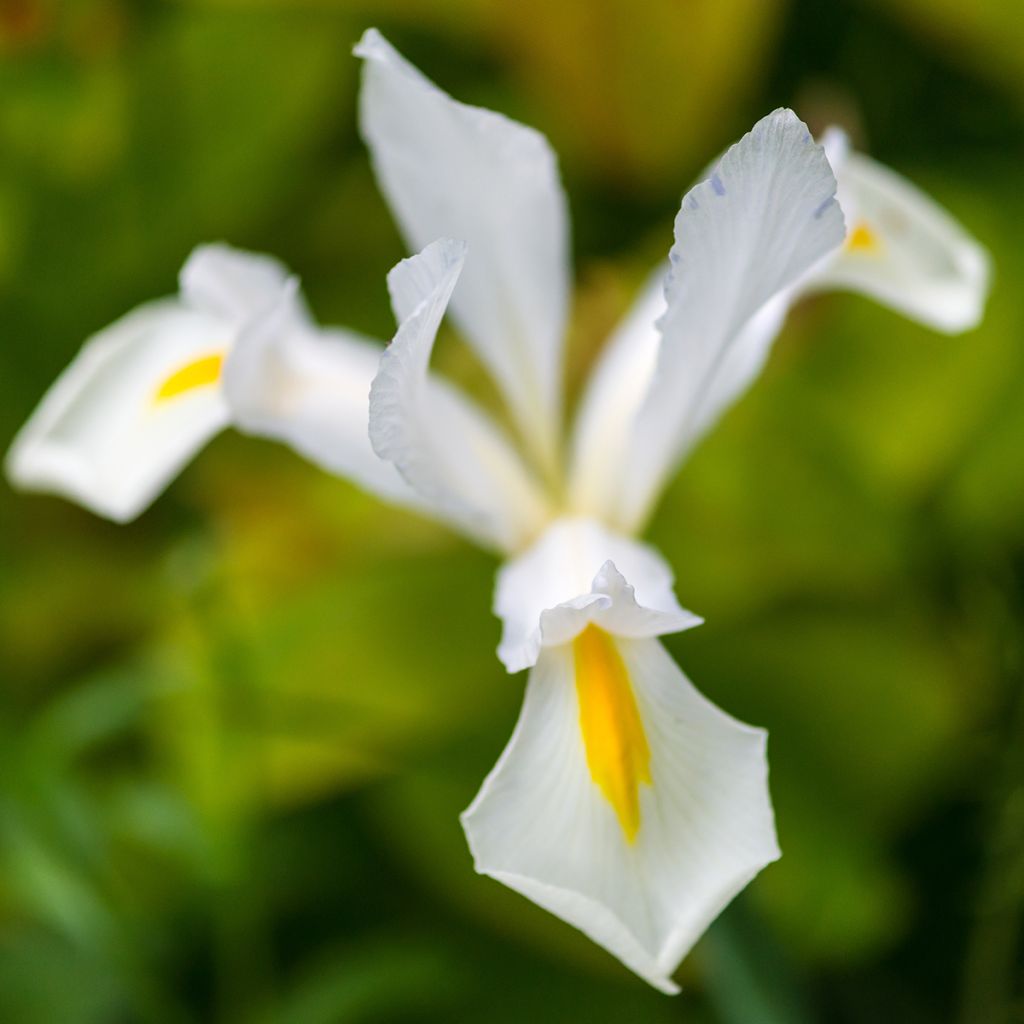

Iris x hollandica White Excelsior
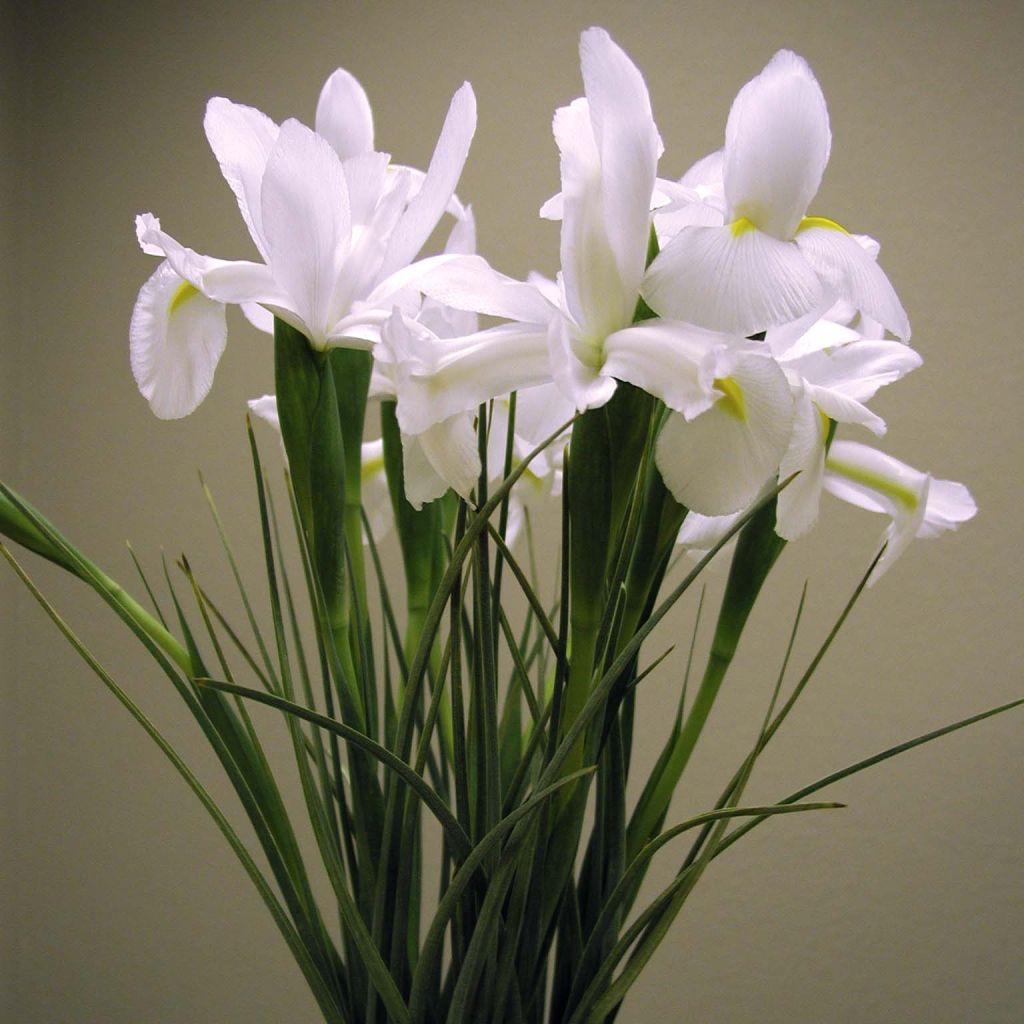

Iris x hollandica White Excelsior
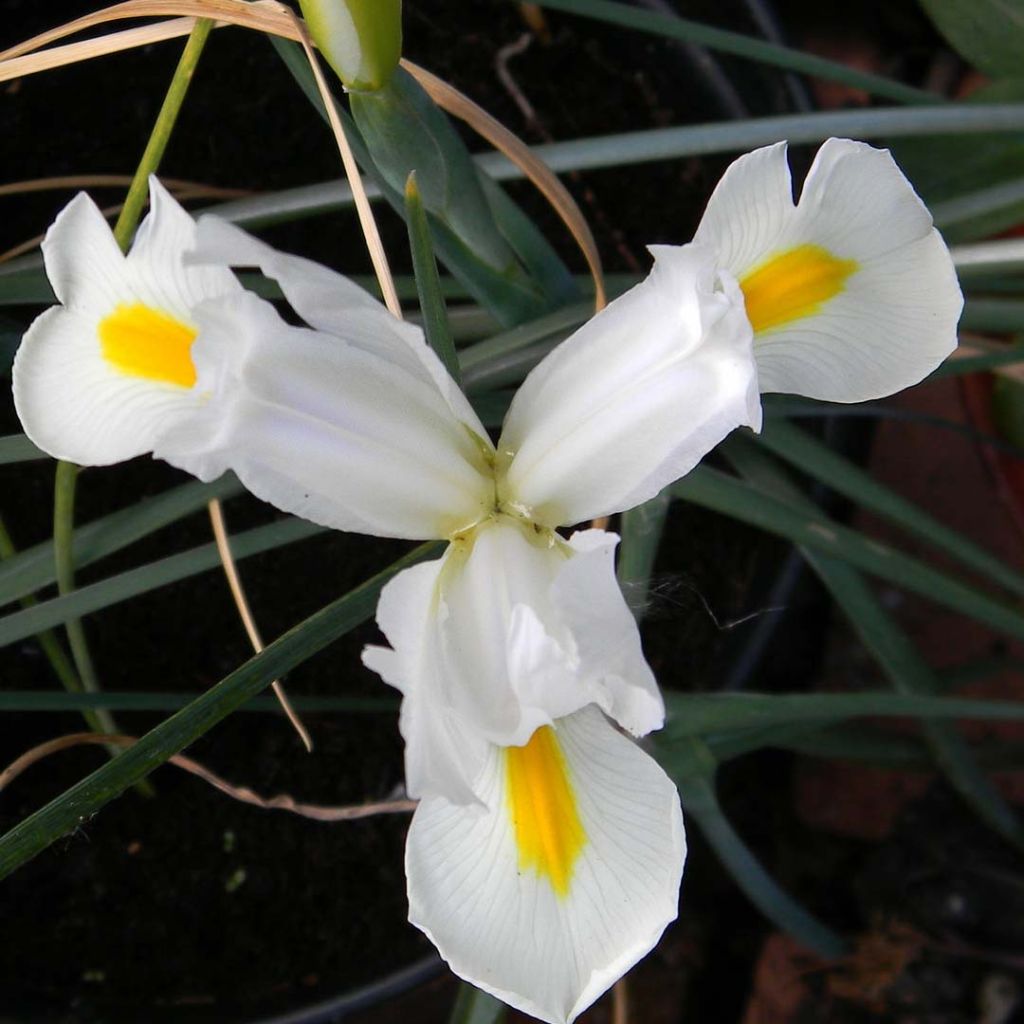

Iris x hollandica White Excelsior
Iris x hollandica White Excelsior
Iris x hollandica White Excelsior
Dutch Iris
This plant carries a 6 months recovery warranty
More information
We guarantee the quality of our plants for a full growing cycle, and will replace at our expense any plant that fails to recover under normal climatic and planting conditions.
From €5.90 for pickup delivery and €6.90 for home delivery
Express home delivery from €8.90.
Does this plant fit my garden?
Set up your Plantfit profile →
Description
The Iris hollandica 'White Excelsior' offers a flower of pure white, with narrow floral parts, highlighted by a small golden yellow spot on the sepals. This bulbous iris blooms at the beginning of the Dutch Iris season, usually before the blue varieties Blue Magic and Sapphire Beauty. Its sleek, stylized flowers stand out for their elegance in the garden and allow for the creation of sumptuous bouquets. The pure white of 'White Excelsior' pairs well with all kinds of flowers, in pastel or vibrant colours!
The Dutch Iris, or bulbous iris, have an underground storage organ in the form of a bulb, rather than a rhizome like their famous cousins, the German Iris or garden iris. Belonging to the same botanical family as the German Iris, the iridaceae family, they also differ by the absence of "beards", those pretty little fluffy and colored tongues found on the drooping sepals of German Iris. The first Dutch iris (x) hollandica never grew in the wild on Dutch soil, but are the result of cross-breeding between two main botanical species: Iris filifolia, sometimes confused with Iris xyphium which resembles it, both native to Spain and North Africa, and Iris tingitana, from Tangier and northern Morocco. The genealogy of Dutch hybrids can sometimes be confusing, but the result is always remarkable. Their flowers, a bit underused in the garden, are highly appreciated in floristry.
The cultivar White Excelsior forms over time a dense, upright, and narrow clump of 50-55 cm (20-22in) in bloom, this perennial expands without theoretical limits through the production of bulblets. This cultivar blooms in late spring, usually in May-June, for 2 to 3 weeks, on sturdy wind-resistant stems. Its solitary or paired flowers on the stems, measuring up to 10 cm (4in) in diameter, are relatively thin compared to those of German Iris, but undeniably elegant. Each flower is composed of 3 upright, slender, translucent, small petals. Beneath this trio are 3 arched sepals, upright then drooping at their tips, closely attached to the dentate petaloid styles along the edge, arranged in quincunx. Slightly wider, they are slightly spatulate, marked with a beautiful bright yellow spot under the crest of the styles. Each flower can live for 5 to 7 days, even in a vase. The bulb is round, 2 to 3 cm (1in) wide, covered with a fibrous tunic of a rosy beige colour. It produces a few linear, thin, leathery leaves, somewhat resembling those of a grass, with a slightly glaucous green colour, often lightly striated and folded in half towards the ground. They often appear in autumn, persist to a greater or lesser extent depending on the severity of the winter, and dry out in summer during the dormant period.
Less known and less used by gardeners than German Iris, Dutch Iris are nevertheless easy to grow in fertile, light soil, with undeniable elegance, but also indifferent to wild grasses that have difficulty infiltrating their very vertical clumps. Plant them in groups of 10 to 20 bulbs of the same variety; they will come back year after year to offer you more and more sleek and cheerful flowers, which go well with the spring flowering of flowering shrubs. They are also stunning when planted alongside ornamental garlic, in the midst of perennials such as Californian poppies, peonies, and daylilies, which will mask their absence in summer when they are dormant. Their Mediterranean origins give them excellent adaptation to summer drought. Finally, pick their flowers to create bouquets with roses, arums, or even late tulips. All iris varieties need a sunny exposure to flower well. Give them at least half a day of full sun per day.
Iris x hollandica White Excelsior in pictures
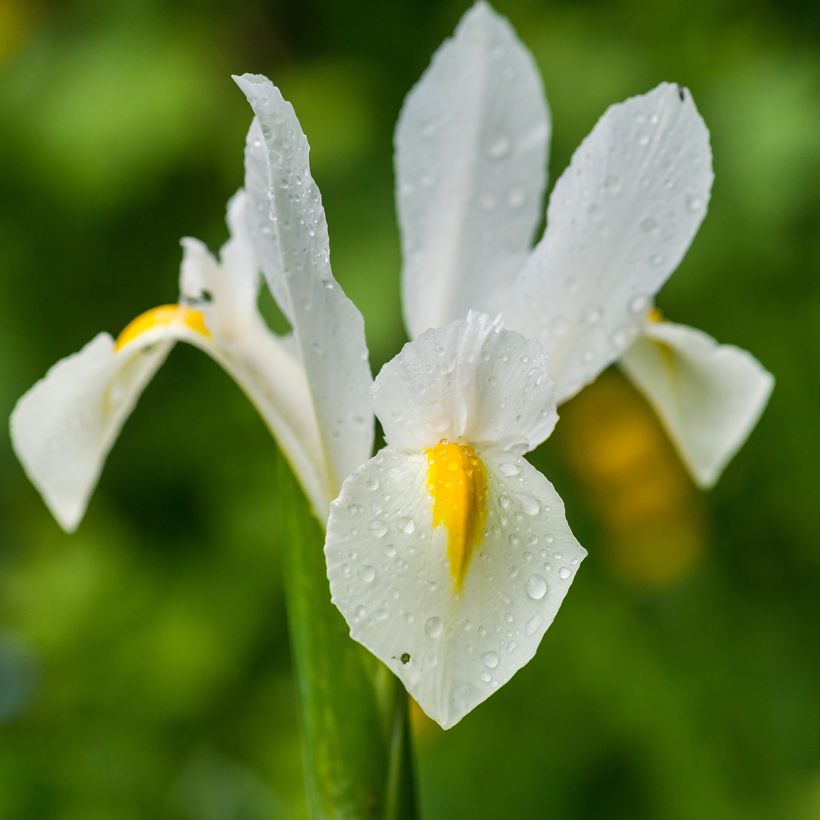

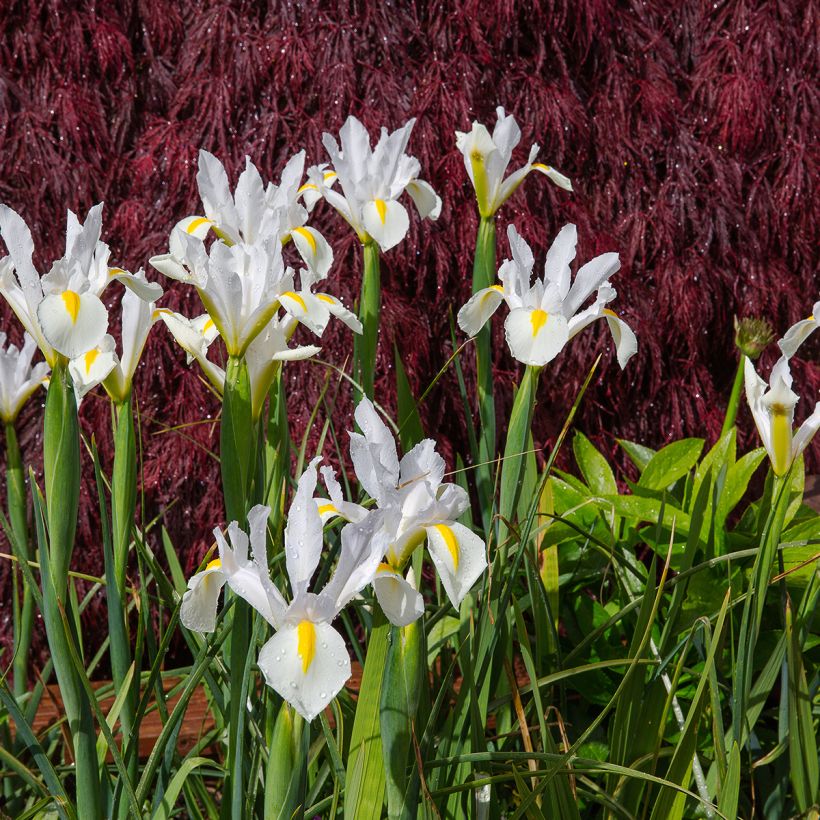

Plant habit
Flowering
Foliage
Botanical data
Iris
x hollandica
White Excelsior
Iridaceae
Dutch Iris
Cultivar or hybrid
Other Iris hollandica - Dutch iris
Planting and care
Plant the bulbs in September-October, in a sunny location, in ordinary but fertile, deep, and well-drained soil (even sandy or rocky). If necessary, add a little coarse sand or compost to your soil. Plant the bulbs 10 cm (4in) deep and preferably in groups of the same variety, spaced 10-15 cm (4-6in) apart. Cut off the faded flowers at their base, taking care to leave the stem. Continue to water the plants at their base. Once the foliage turns yellow, remove it and leave the bulbs in place for them to bloom again the following year. After flowering, water with liquid fertilizer three times at one-month intervals. Leave the bulbs in place for several years. Dutch Irises rest in summer, preferably in dry soil. Their bulbs do not tolerate consistently wet soil during the summer resting period.
Divide the clumps after 4 to 5 years, when they appear less floriferous. Do this once the leaves have dried, at the beginning of the resting period.
The leaves of the Dutch Iris should only be cut when they are dry: they allow the bulb to replenish its reserves for the following spring's flowering. Remove the pods as they form, so that the plant does not exhaust itself producing seeds.
Planting period
Intended location
Care
Haven't found what you were looking for?
Hardiness is the lowest winter temperature a plant can endure without suffering serious damage or even dying. However, hardiness is affected by location (a sheltered area, such as a patio), protection (winter cover) and soil type (hardiness is improved by well-drained soil).

Photo Sharing Terms & Conditions
In order to encourage gardeners to interact and share their experiences, Promesse de fleurs offers various media enabling content to be uploaded onto its Site - in particular via the ‘Photo sharing’ module.
The User agrees to refrain from:
- Posting any content that is illegal, prejudicial, insulting, racist, inciteful to hatred, revisionist, contrary to public decency, that infringes on privacy or on the privacy rights of third parties, in particular the publicity rights of persons and goods, intellectual property rights, or the right to privacy.
- Submitting content on behalf of a third party;
- Impersonate the identity of a third party and/or publish any personal information about a third party;
In general, the User undertakes to refrain from any unethical behaviour.
All Content (in particular text, comments, files, images, photos, videos, creative works, etc.), which may be subject to property or intellectual property rights, image or other private rights, shall remain the property of the User, subject to the limited rights granted by the terms of the licence granted by Promesse de fleurs as stated below. Users are at liberty to publish or not to publish such Content on the Site, notably via the ‘Photo Sharing’ facility, and accept that this Content shall be made public and freely accessible, notably on the Internet.
Users further acknowledge, undertake to have ,and guarantee that they hold all necessary rights and permissions to publish such material on the Site, in particular with regard to the legislation in force pertaining to any privacy, property, intellectual property, image, or contractual rights, or rights of any other nature. By publishing such Content on the Site, Users acknowledge accepting full liability as publishers of the Content within the meaning of the law, and grant Promesse de fleurs, free of charge, an inclusive, worldwide licence for the said Content for the entire duration of its publication, including all reproduction, representation, up/downloading, displaying, performing, transmission, and storage rights.
Users also grant permission for their name to be linked to the Content and accept that this link may not always be made available.
By engaging in posting material, Users consent to their Content becoming automatically accessible on the Internet, in particular on other sites and/or blogs and/or web pages of the Promesse de fleurs site, including in particular social pages and the Promesse de fleurs catalogue.
Users may secure the removal of entrusted content free of charge by issuing a simple request via our contact form.

































